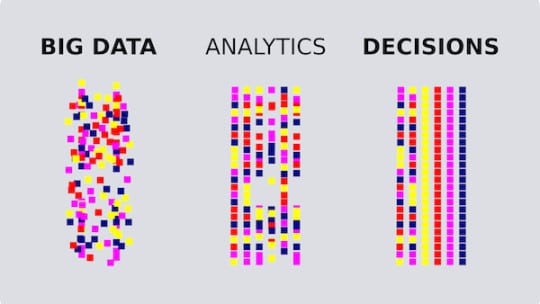
In this everything-digital era, using analytics to drive communications strategy should be our lifeblood. By embracing data, we can use it to step up and shine, further validate the importance of earned media and reaffirm our seat at the table brings significant value.
As PR pros, we’re up against a number of challenges: fake news, a decline in the public’s trust in brands, content pollution, looming crises, content overload. How we communicate and consume information is rapid, wild and often distracted. Staying ahead of the digital revolution is hard work.
We’re constantly grappling with trendy new communications apps bursting onto the scene, the blurring lines between marketing and communications, paid vs. earned media and the traditional media approach slowly moving out of the spotlight. But with the tremendous digitization of our industry, we have the opportunity to move from counting clips to analyzing measurable data and extracting insights that drive communications strategy.
With metrics so readily accessible, we can more accurately identify how our messages are received, track how our brands are viewed in the market and even detect looming crises in some cases.
Mea Culpa: Data Overwhelmed Me at First
I will admit, the idea of analyzing data was scary at first. Overwhelming, even. Numbers weren’t my forte. But dabbling on analysis platforms led me to an epiphany: Don’t fear the data; the data tells a story.
As an industry, we’re at the beginning of the data journey. And that’s OK. As we become more comfortable using data to drive insights, we’ll expand our skills and organizations will invest in the best tools that set us up for success. We’ll become more confident in our ability to create a strong brand story out of a lot of numbers.
Removing the Guesswork
At the very least, data helps communicators bring informed discussions to brand leaders. We can show them why certain brands are spiking in the news, gaining traction at various times of the year, and how their brand stacks up. What’s their brand’s place in the discussion? Where is the brand’s voice showing up—or not—and how is it being heard? Where can the brand be stronger, and where is it impeded? This is valuable insight. We can assess and reassess strategies based on this information, and go to the table armed with facts that allow for more strategic recommendations on PR strategies. We can be even better brand counselors.
Data allows us to track patterns, identify where a brand is showing up versus competitors and how these messages are landing. We can also identify highs and lows in the data and the root cause of these spikes: Did the company announce significant news? Issue a press release? Launch a product? Host a major event? This gives us a great sense of whether the timing of a news launch is ideal. If not, we can make recommendations for a more impactful splash in the market. Again, strengthening our ability as a brand counselor.
Data Is the Beginning of the Conversation
Some argue measuring is a setup for failure. That if we don’t hit the mark, we haven’t succeeded. But, the data isn’t the be-all, end-all. Actually it's just the opposite. It’s the beginning of a conversation. It can help answer why we succeeded in one quarter, but perhaps not in the next. Data can help us spot unanticipated trends. We can then bring that knowledge to strategic discussions and recommend new approaches to ensure the brand’s voice is heard louder, stronger and with more impact.
Of course, no one likes to be measured. But remember that measurement isn’t a report card so much as a tutor educating us on our quest to be better brand strategists. Data is a tool we as PR professionals can use to learn and get better over time, and educate ourselves on strategy and best approaches to deliver messages into the market.
As the digital revolution continues to unfold, more trends will emerge. New technology like artificial intelligence, chatbots and data-mining robots will become part of the discussion and will continue to provide us with opportunity to develop insight. The tools will be better, our insights will be stronger and, ultimately, our value as PR pros and brand advisors will be even greater.
Megan Dubrowski is global communications leader at KPMG. Follow her: meg_dub
